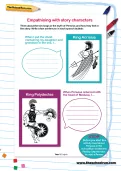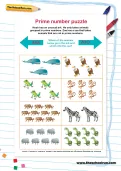Important update from TheSchoolRun
For the past 13 years, TheSchoolRun has been run by a small team of mums working from home, dedicated to providing quality educational resources to primary school parents. Unfortunately, rising supplier costs and falling revenue have made it impossible for us to continue operating, and we’ve had to make the difficult decision to close. The good news: We’ve arranged for another educational provider to take over many of our resources. These will be hosted on a new portal, where the content will be updated and expanded to support your child’s learning.
What this means for subscribers:
- Your subscription is still active, and for now, you can keep using the website as normal — just log in with your usual details to access all our articles and resources*.
- In a few months, all resources will move to the new portal. You’ll continue to have access there until your subscription ends. We’ll send you full details nearer the time.
- As a thank you for your support, we’ll also be sending you 16 primary school eBooks (worth £108.84) to download and keep.
A few changes to be aware of:
- The Learning Journey weekly email has ended, but your child’s plan will still be updated on your dashboard each Monday. Just log in to see the recommended worksheets.
- The 11+ weekly emails have now ended. We sent you all the remaining emails in the series at the end of March — please check your inbox (and spam folder) if you haven’t seen them. You can also follow the full programme here: 11+ Learning Journey.
If you have any questions, please contact us at [email protected]. Thank you for being part of our journey it’s been a privilege to support your family’s learning.
*If you need to reset your password, it will still work as usual. Please check your spam folder if the reset email doesn’t appear in your inbox.
How your Year 5 child develops

Fashion-conscious and increasingly mature, your Year 5 child is hurtling towards the teenage years. At this age, however, they’re likely to be generally good-natured and mature, and have a positive outlook on life.
What’s going on in there?
The difference between boys and girls is becoming more pronounced. Girls are likely to be undergoing the growth spurt that marks the start of puberty, and can be hormonal, emotional and sometimes irrational. Boys, on the other hand, still seem somewhat immature in comparison. These gender differences spill over into children’s games and activities: your child loves to participate in groups and clubs, but always with the same sex.


Start the Year 5 Learning Programme!
- Weekly maths & English worksheets direct to your inbox
- Follows the National Curriculum
- Keeps your child's learning on track
Your child is developing a strong conscience at age nine to 10, which informs how they behave. They’re independent, reliable and trustworthy and in general, tell the truth. They also have a highly developed sense of justice, and are concerned with being treated fairly.
Fashion, music and television become very important to Year 5 children. Your ‘tweenager’ is likely to start expressing opinions about how they dress and wear their hair, and identifying strongly with TV characters. They’re also keen to assert themselves as a grown-up and want to avoid anything childish, right down to bedroom décor.
“It’s important at this stage to ensure that your child continues to follow your family rules,” says chartered educational psychologist and educational adviser Susan Brooks. “It’s sometimes easy to forget that your child is still only 10 years old and will continue to benefit from firm, consistent parenting.”
Potential pressure points
In general, Year 5 is a relatively comfortable year for most children, and on the whole, they’re good-natured and fun. However, there are still some challenges that may put your child under pressure:
- The start of puberty.
- A growing awareness of money: who has it, and who doesn’t.
- Feeling the need to compete in the fashion stakes.
- Coping with increasing independence at home and at school.
- For girls, body image issues influenced by what they see in the media.
- Starting to prepare for secondary entrance, for example by visiting schools or studying for the Eleven Plus exam.
Warning signs to watch out for
According to recent research, 10-year-olds – particularly girls – are prone to stress and anxiety, often fuelled by pressures to conform and keep up in the fashion stakes. Signs of stress to watch out for, in both sexes, include:
- being overly self-critical (‘I hate myself’).
- body image issues: overeating, dieting, complaining about being fat.
- uncontrollable anger, perhaps including self-harming.
- poor sleeping patterns.
- tearfulness.
- developing nervous habits such as a tic, a stutter or hair-twiddling.
- becoming withdrawn and sullen.
“With lots of mood swings on the cards at this age, your child may not always be able to account for or explain their behaviour,” adds chartered educational psychologist Julia Busch Hansen. “Try not to always pass judgement, but be there to listen and support.”








